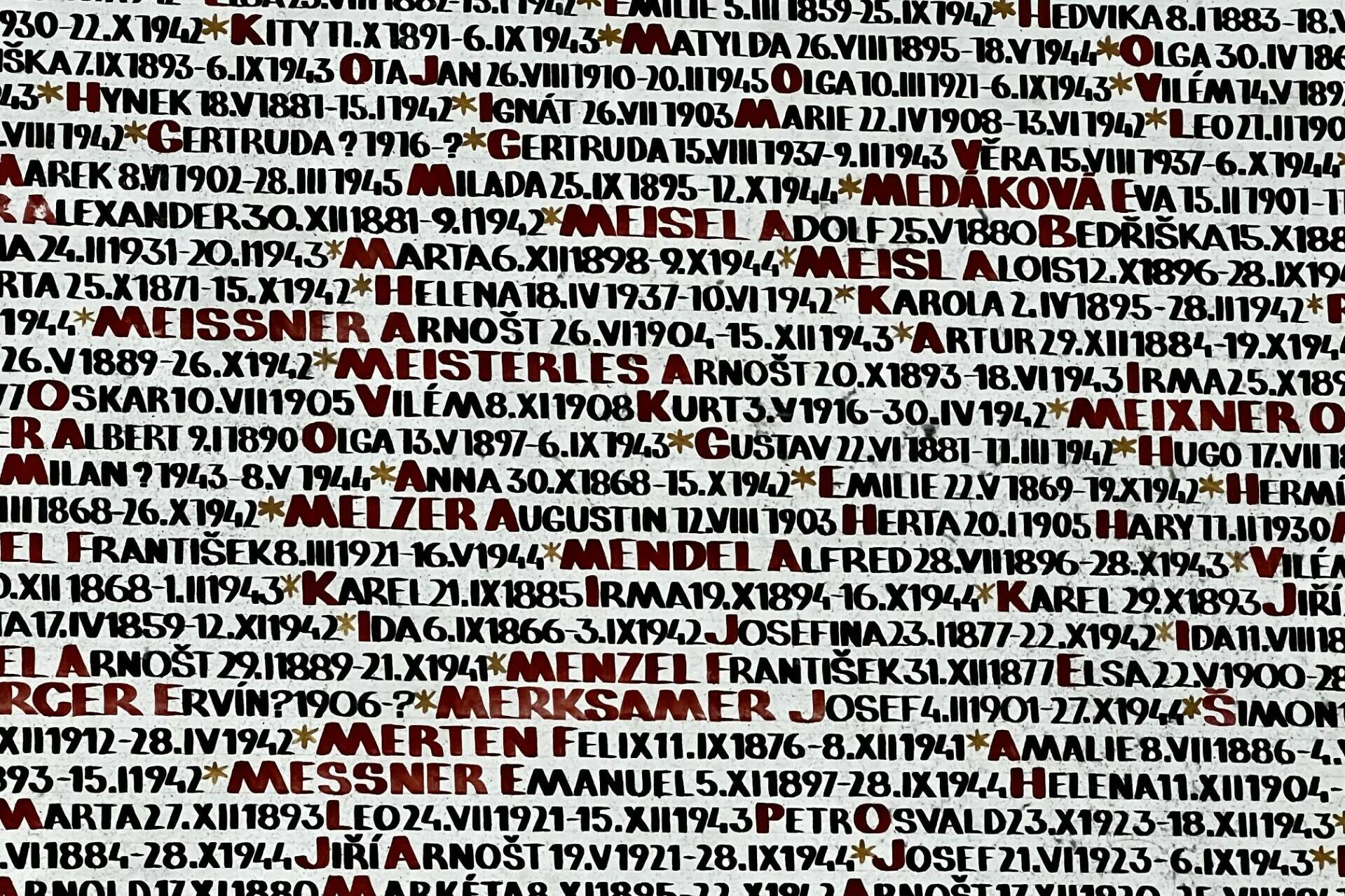“Prague never lets you go…this dear little mother has sharp claws.” — Franz Kafka
We decided to spend Passover in the Czech Republic. Actually it was all serendipity as we had planned the trip months ago, long before I realized on what dates Passover fell this year. Still the journey became known forever more as Passover in Prague. Spending a holiday that prohibits the eating of such foods as breads and pastries, in the land of schnitzel and strudel was perhaps not the best plan, but we forged ahead, tried our best, and asked forgiveness when temptation got the best of us. Which happened MANY times. Oh well, vacations are a no-guilt zone, right?
We went to the Czech Republic because my maternal grandmother was from Prague. Last year we went to Wales for my husband to research his roots. This year was for my family. I never knew my grandmother as she died when my mother was just one year old. With no connection to that side of the family, I was going to the Czech Republic in hopes of finding some tie, somewhere.
Prague, like Juneau, is a much loved stop for tour groups. Many of the river cruise tours originate or end in Prague. From 9 a.m. daily the historic city is packed with tourists. All crowding in at the top of the hour to watch the ancient Astronomical Clock and its moving figures that appear as the bell strikes or forming great queues to enter the Castle buildings. Fortunately, as independent travelers we were able to work around the crowds and in the early morning or evening had the city almost to ourselves.
The one place I knew I wanted to visit while in Prague was the old Jewish Quarter. Before World War II 180,000 Jews lived in Bohemia, the region in which Prague lays. After the war, fewer than 10,000 remained. Dating back over 900 years, the Jewish Quarter is now preserved as a museum with five synagogues, a cemetery, and several galleries.
The cemetery with over 12,500 tombstones, jumbled upon each other, slanted or fallen, many seemingly neglected, was profoundly moving and beautiful in its own unique way. It reminded me of the briefness of life and the importance of remembrance; why we speak the names of our beloved dead on Yom Kippur to keep them forever alive in memory.
The synagogues ranged from one built in 1280 with a distinct Gothic appearance, to the newest built in 1868 in a striking Moorish-style with an ornate and stunning interior. As I walked though each I thought of my Juneau synagogue, Congregation Sukkat Shalom, and knew that all the life cycle events and holidays seen in these synagogues, were held and done in much the same way as my home synagogue and would be familiar to me.
The second-oldest synagogue, the Pinkas synagogue dating from 1535, has been turned into a memorial for Shoah (Holocaust) victims from Bohemia and Moravia. On the walls are inscribed the names of the victims. Over the public address system the names are read. Room after room, wall after wall, all bearing the names, the seemingly uncountable, seemingly endless list of names. As I walked through the rooms I was overcome. Tears began to well up in my eyes and fall onto my jacket. I felt the names to my very soul. The sound of the names resonated within me. Then I came to the last wall in a room and saw my grandmother’s family name, Meissner, and the first names of those who were killed. I was stunned. I was sobbing.
I came to Prague to find a connection to a part of my family tree. I found that connection in the faces of older Czech women with features so much like my mother’s. Faces of strangers, yet faces that were so familiar. I found that connection in a bluntness and kindness the Czechs possess and that I do too. I found that connection in a love for schnitzel and strudel. I found that connection in my Judaism that transcends nations’ boundaries. And I found that connection on a wall of names. A connection that will never let go and will never be forgotten.
• Patricia Turner Custard is a Congregation Sukkat Shalom board member. ”Living and Growing” is a weekly column written by different authors and submitted by local clergy and spiritual leaders. It appears every Friday on the Juneau Empire’s Faith page.

